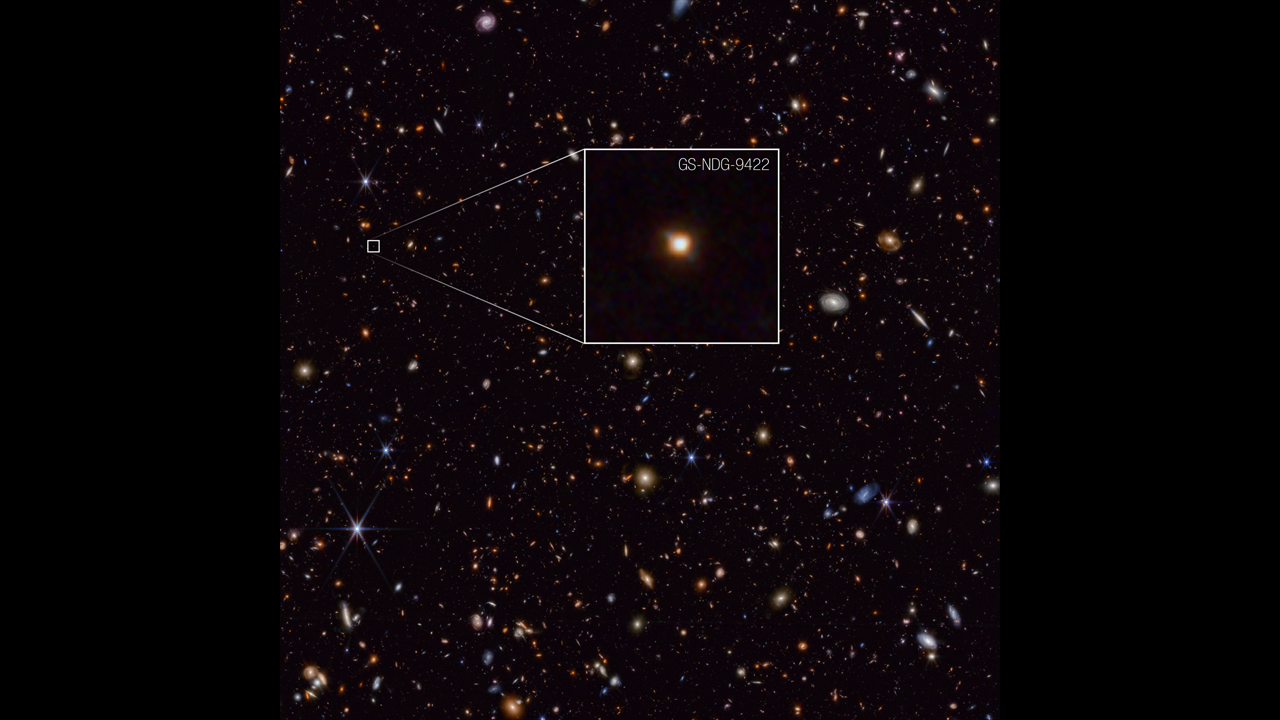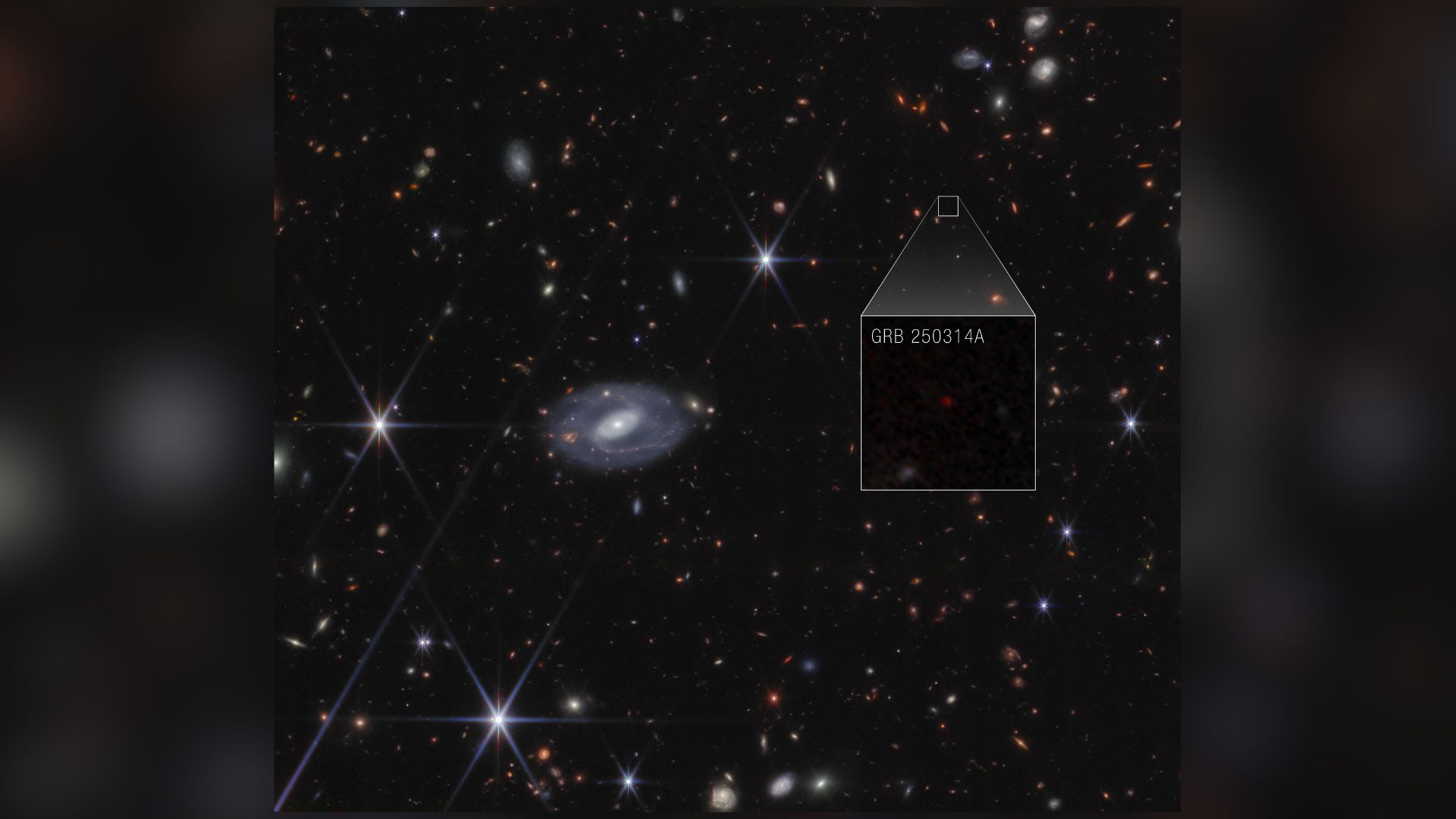'That's weird': James Webb Space Telescope spies a strange galaxy outshining its stars
The newfound galaxy, GS-NDG-9422, "will help us understand how the cosmic story began."

In a pocket of the universe teeming with galaxies, the James Webb Space Telescope has zeroed in on one blazing so brightly it outshines its stars.
The James Webb Space Telescope has spotted the galaxy named GS-NDG-9422 — a realm that existed about one billion years after the Big Bang, and indeed one that may provide the missing link of galaxy evolution between the universe's first stars and well-structured galaxies.
GS-NDG-9422 "will help us understand how the cosmic story began," Alex Cameron, an observational astronomer at the University of Oxford in the U.K., said in a recent news release. "My first thought in looking at the galaxy's spectrum was, 'that's weird,' which is exactly what the Webb telescope was designed to reveal."
The newfound galaxy is inconspicuous — except for its unique light signature, which includes patterns astronomers haven't seen before. Those features, which contribute to the light seen by Webb, are best explained by the galaxy's superheated gas, rather than its stars, according to a paper published by Cameron and his colleagues in June in the journal Monthly Notices of the Royal Astronomical Society.
Related: James Webb Space Telescope finds 'puffball' exoplanet is uniquely lopsided
Computer models of gas clouds that are so heated by hot and massive stars to the point that their stars outshine their cosmic birthplaces were "nearly a perfect match to Webb's observations," according to the release. The newfound galaxy appears to be in the midst of a star-birth sprint, and its reservoirs of gas and dust are being pummeled with countless photons of light. It is this light the JWST has managed to see.
The telescope's data about GS-NDG-9422 suggests its stars "must be much hotter and more massive than what we see in the local universe," said study co-author Harley Katz, who is an assistant professor of astronomy and astrophysics at the University of Chicago. "Makes sense because the early universe was a very different environment."
Breaking space news, the latest updates on rocket launches, skywatching events and more!
The stars' temperatures exceed 140,000 degrees Fahrenheit (80,000 degrees Celsius), which is about twice the expected temperature for typical hot and massive stars, the new study found.
Astronomers are relying on the JWST's infrared-penetrating capabilities to piece together the earliest years of our universe, when the cosmos flaunted a surprising number of galaxies that had grown very large very quickly and also were hotspots for star formation.
Figuring out just how rare oddball galaxies like GS-NDG-9422 were at the time would allow astronomers to refine galaxy evolution models.
"It's a very exciting time, to be able to use the Webb telescope to explore this time in the universe that was once inaccessible," Cameron said in the statement. "We are just at the beginning of new discoveries and understanding."

Sharmila Kuthunur is an independent space journalist based in Bengaluru, India. Her work has also appeared in Scientific American, Science, Astronomy and Live Science, among other publications. She holds a master's degree in journalism from Northeastern University in Boston.
